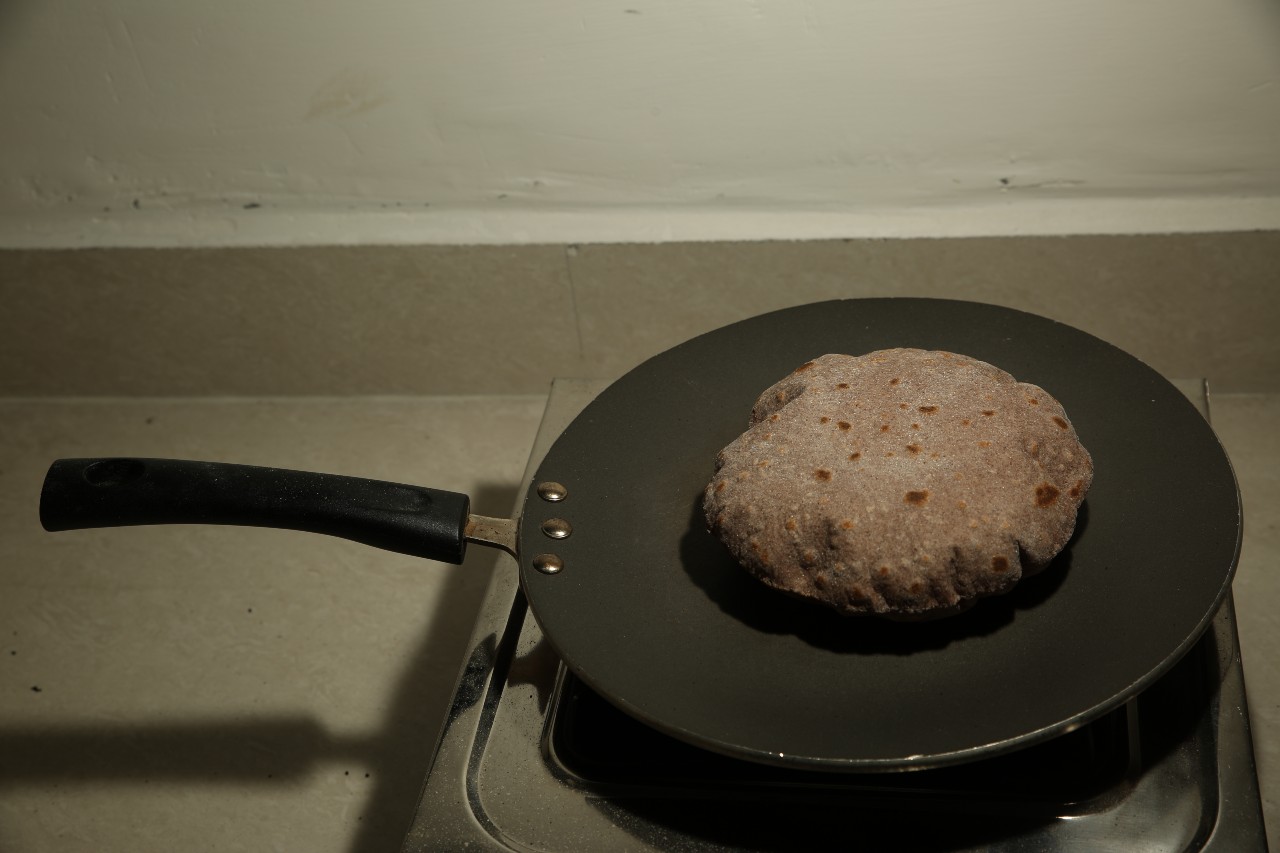Black Bread & Purple Rotis? Meet The Scientists Solving Health Issues With Coloured Wheat
Dr Monika Garg, a scientist at National Agri-Food Biotechnology Institute (NABI) in Mohali, Punjab, has developed three new varieties of wheat - black, blue, and purple - which can reduce blood sugar levels, cholesterol levels and body fat levels.

Imagine a regular lunch, but with black and purple-coloured chapatis. Or how about swapping your brown-coloured biscuits for black or blue coloured ones? Thanks to a group of scientists at the National Agri-Food Biotechnology Institute in Mohali, Punjab, wheat is no longer the plain old brown we’re used to. Not only can the crop be grown in three different colours, but it is also healthier compared to regular wheat. Black and purple wheat have proven to reduce blood sugar levels, cholesterol levels and body fat levels.
Dr Monika Garg, the lead scientist behind the project, explains that the wheat gets its purple hue from anthocyanin, which is a pigment and an antioxidant.

“The newly developed variety is loaded with more nutrition than traditional wheat. It has minerals such as zinc and iron, and antioxidants called anthocyanins. These are usually found in fruits such as jamun, blueberries, and blackberries. However, eating these fruits in large quantities can increase blood sugar levels. Meanwhile, coloured wheat can provide an equal amount of antioxidants, as well as more benefits, without the fear of high blood sugar,” says Monika, adding that the flour can be used to make the same commercial products made with whole wheat, such as breads, buns, biscuits, noodles, rotis, and more.
A six-year long research
In 2011, as part of her research at NABI, Monika decided to work on bio-fortification, a field of research that has always been a major challenge for agricultural biotechnologists. This involves genetically modifying or selectively breeding crops to increase their nutritional value.
“Extensive research was already conducted on purple wheat at Tottori University, Japan. I gained the technical know-how by approaching a 45-year-old professor there. The same year, I procured genome plasma from Japan and the USA to modify them according to Indian climatic conditions through plant breeding,” says Monika, adding that plant breeding is a method of changing the genetic pattern of plants, through cross-breeding, to increase their nutritional value and utility for farmers growing them.
Once the genome was modified, the seeds were planted in agricultural land within the university.
“With the first few attempts, we could not immediately taste success. The seeds had to be repeatedly engineered to ensure they would grow under Mohali’s climatic conditions. Apart from that, we also had to ensure they would be able to withstand temperatures in other states,” says Monika.
After repeated modifications, in 2016, three versions of the wheat were developed — purple, blue and black. Each had a different colour depending on the amount of anthocyanin, black being the highest. The purple and black version of the seeds were released commercially in 2017.
A healthier alternative
According to Monika, after the final version of seeds were finalised, her team conducted lab-level tests to determine the nutritional values and properties of raw material and cooked-products.
For 12 weeks, mice were fed a supplement that contained the newly-developed wheat. These experiments were approved by the Institutional Animal Ethics Committee of the National Institute of Pharmaceutical Education and Research (NIPER).
The mice were separated into five groups. Some were given a high-fat diet with regular wheat, while the others were fed purple wheat. By analysing them closely, it was concluded that the purple wheat had reduced total cholesterol level, triglyceride and free fatty acid levels. The reports also suggest that there was a restoration of blood and insulin resistance.
“Regular inclusion of anthocyanins in diet can remove harmful free radicals from the body. It prevents lifestyle disorders such as obesity, heart diseases, and diabetes,” says Monika.
In 2017, 28 companies including ITC, Bansal Bakers, and Vikas WSP Ltd were willing to grow and make products using this wheat flour. They signed MoUs with NABI, Mohali to procure the seeds, and grew the crops in states such as Haryana, Punjab, Rajasthan, and Madhya Pradesh through contract-farming. Monika says that farmers were able to get Rs 2,000 to Rs 4,000 higher income per acre after the sale of their produce.
In 2018, Anil Hurkat, the founder of Shri Lakhadatar Foods, based in Indore, signed an MoU with NABI to procure black wheat.
“After signing the MoU, I purchased the wheat from farmers who were already growing it through a contract farming method. These seeds were then processed at my manufacturing unit in Sarjapur district, made into flour, packaged and sold under the brand Sanjeevani. But sales are yet to pick up. Only a few are aware of the benefits of black wheat,” says Anil.
Dr Rajesh Mishra, a Jaipur resident who has been working in the pharmaceutical and food industry for more than 30 years, is a regular consumer of black wheat. He says that it is a miracle food that has many benefits. He started consuming black-wheat based chapatis regularly three months ago, after undergoing major surgery. The doctors had advised him to avoid whole wheat food and switch to multigrain.

He says, “For one month, I ate multigrain atta-based food, but would face troubles with digestion or elevated sugar levels. Because I am working in the pharmaceutical industry, I came across a study published regarding black/purple wheat. I procured it after thoroughly analysing its properties and benefits. The first benefit I noticed was that my digestion improved. Even my sugar levels are stable. Now, I eat only black wheat chapatis and so do my family members.”
If you wish to purchase black wheat, you can call Anil Hurkat at 9893756350. Purple and black wheat flour is also available under different brand names on Amazon.
(Edited by Divya Sethu)
This story made me
- 97
- 121
- 89
- 167
Tell Us More
We bring stories straight from the heart of India, to inspire millions and create a wave of impact. Our positive movement is growing bigger everyday, and we would love for you to join it.
Please contribute whatever you can, every little penny helps our team in bringing you more stories that support dreams and spread hope.



















